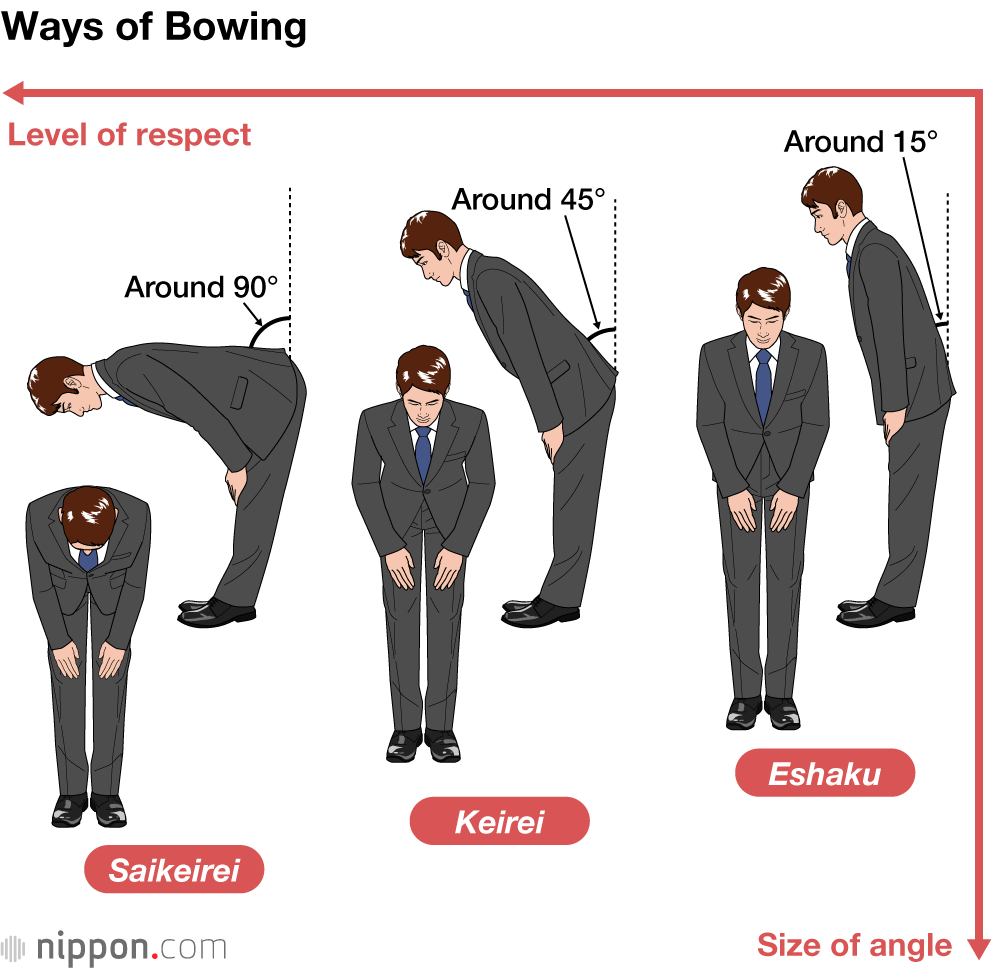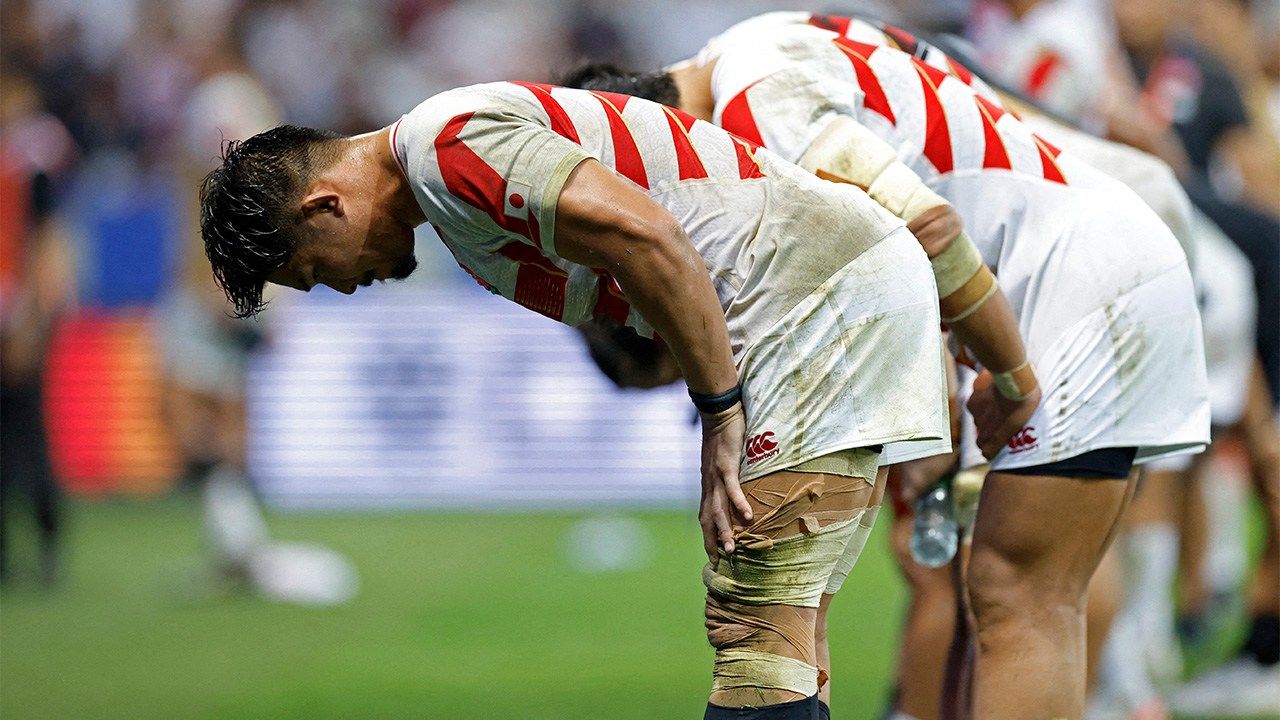
A Basic Guide to Japanese Etiquette
How to Bow: An Essential Form of Respect in Japan
Guideto Japan
Lifestyle Culture Education- English
- 日本語
- 简体字
- 繁體字
- Français
- Español
- العربية
- Русский
Customary Bows
In Japanese schools, it is customary to bow at the beginning and end of classes. Students rise from their seats facing the teacher, and as one designated student calls Rei! all lower their heads.
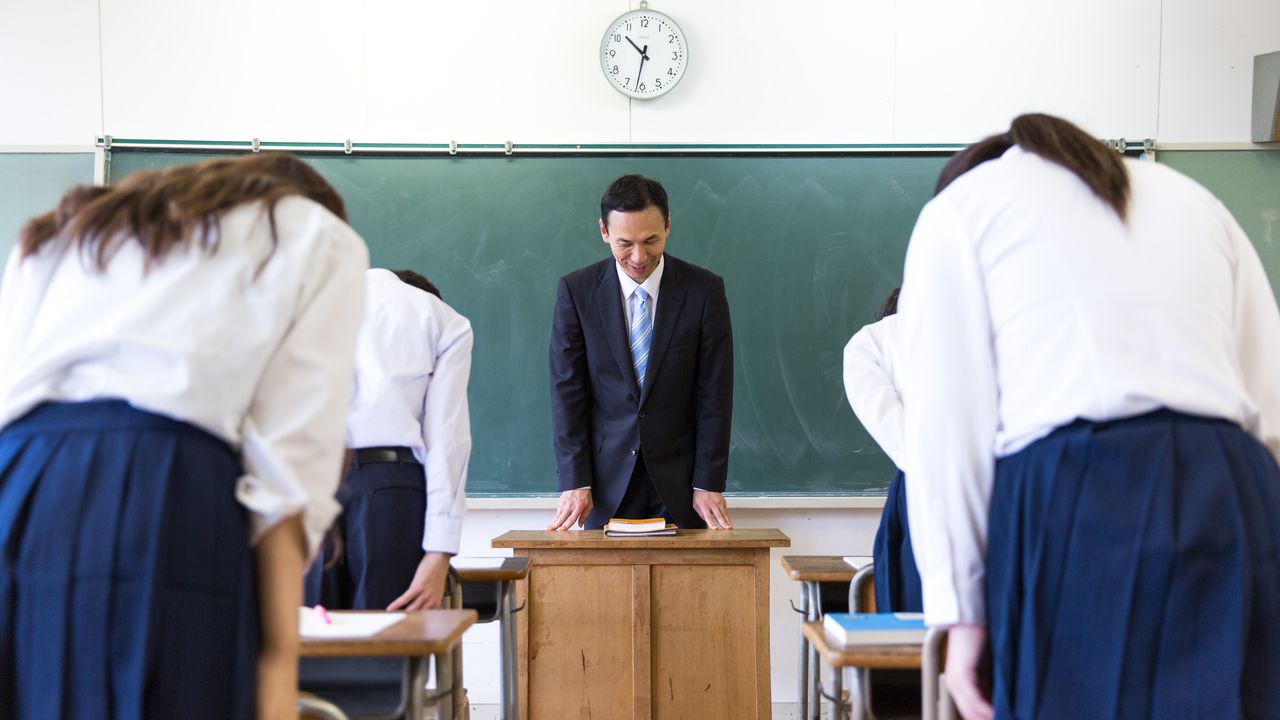
The bowing custom was introduced into classes in the modern era, but some schools do not practice it. (© Pixta)
The word rei can mean to “bow,” as well as “etiquette” more widely, a reflection of this single action’s central importance to good manners in Japan. Originally directed at people of higher rank, the symbolic submission of the vulnerable head indicated that the bower had no hostile intent. Bowing is said to have come from China to Japan more than a millennium ago, becoming a formal part of samurai etiquette in medieval times as a means of showing respect.
Deeper bows convey deeper respect, and there are different names for commonly used types. When standing, the simplest eshaku requires the body to incline around 15 degrees. The standard keirei used in ordinary greetings is 45 degrees, while the saikeirei used in Buddhist or Shintō shows of reverence is a bow almost at a right angle.
- Breathe in and lean upper body forward.
- Breathe out at appropriate angle.
- After breath is finished, breathe in again while raising upper body.
Relax shoulders while bowing, so that hands remain naturally open and slide down from the thighs to the knees. For shallow bows, breaths should be shorter. Even if these instructions are not followed exactly, keeping them in mind helps achieve the right posture.
Traditional etiquette is truly rational, with all actions based on the body’s natural movements. Breathing is key to bowing, as expressed in the phrase reisansoku, meaning literally “bow, three breaths.” When people bow, they should inhale, exhale, and then inhale again. As the length of breaths do not greatly vary between individuals, it is easier to coordinate the timing of those bowing. Inhaling also increases abdominal pressure, allowing them to unconsciously maintain good posture. After lifting the head, one should look at one’s counterpart and exhale while conveying respect. This is called zanshin or “remaining spirit,” in which one continues to remain alert after completing an action, and it is part of the martial arts traditions that emphasize the harmony of mind, technique, and body.

It is common to bow to accompany greetings like ohayō gozaimasu (good morning) and hajimemashite (nice to meet you). (© Pixta)
Many Japanese people do not have a firm understanding of these traditions. Instead, superficial advice like “lower your head and count silently to three” has become common.
Employees at hotels and high-class restaurants often bow deferentially with their hands together in front of their stomachs. One may imagine that this has long been a high form of politeness, but according to one theory it is a relatively modern practice deriving from the technique at the forerunner to today’s Mitsukoshi Department Store.
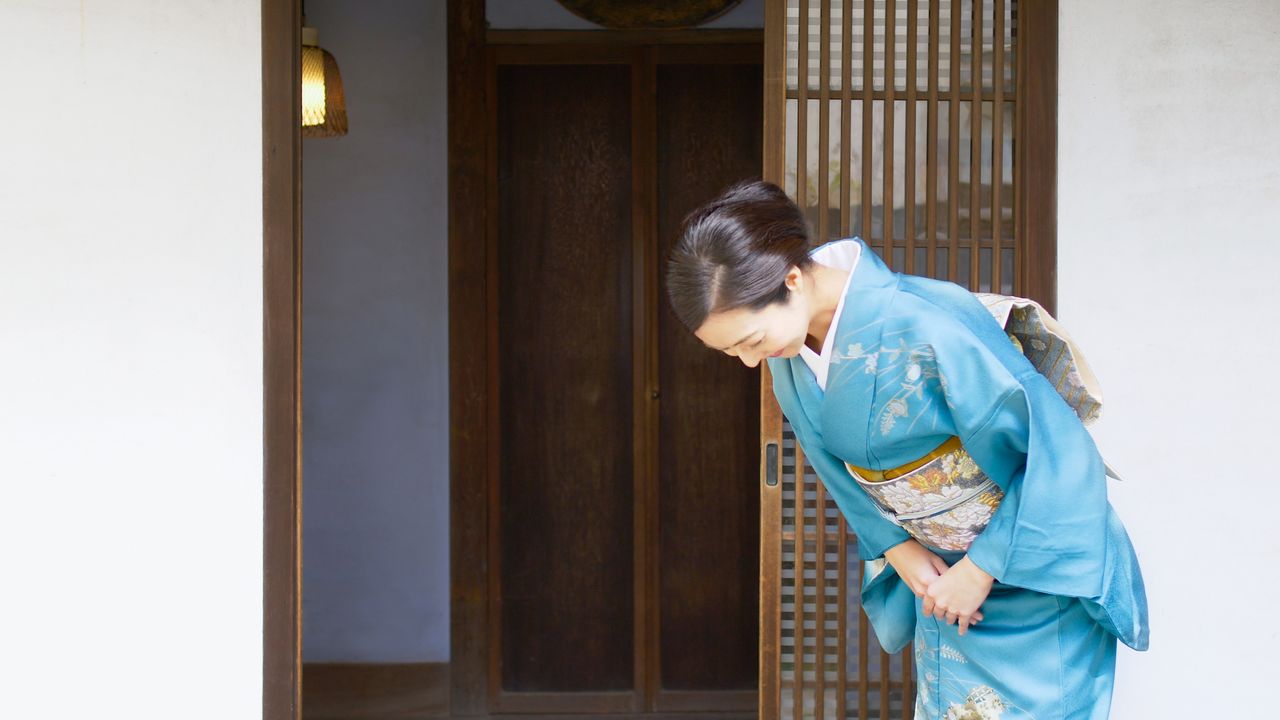
Clasping both hands together in front while bowing is common in customer service, but is not appropriate for typical daily greeting. (© Pixta)
Encouraging Harmonious Relationships
As bowing is used not only for showing respect but also when apologizing or expressing gratitude, this can lead to misunderstandings outside Japan. While politicians or corporate representatives regularly seek to convey contrition through their deep bows at press conferences following a scandal, in sports like baseball or soccer, these are a display of respect and gratitude to spectators and opponents.
At times, this is misinterpreted in overseas media sources or social media as apologizing for defeat, but bowing typically expresses thanks for support. At the 2019 Rugby World Cup, held in Japan, a number of teams followed the host’s example by bowing to spectators, regardless of the result of their matches.
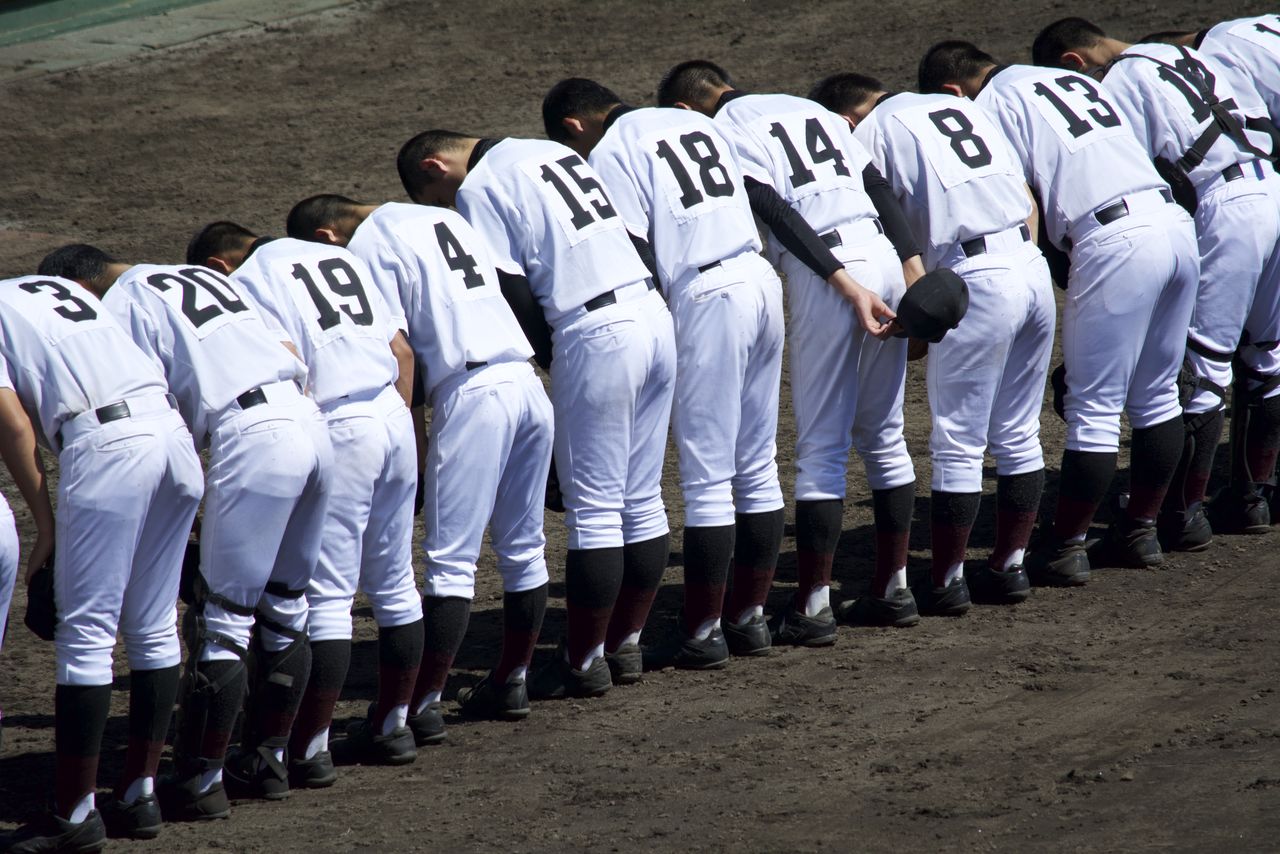
After the match is over, a baseball team bows to thank fans and show respect to opponents, their supporters, and even the stadium where the game took place. (© Pixta)
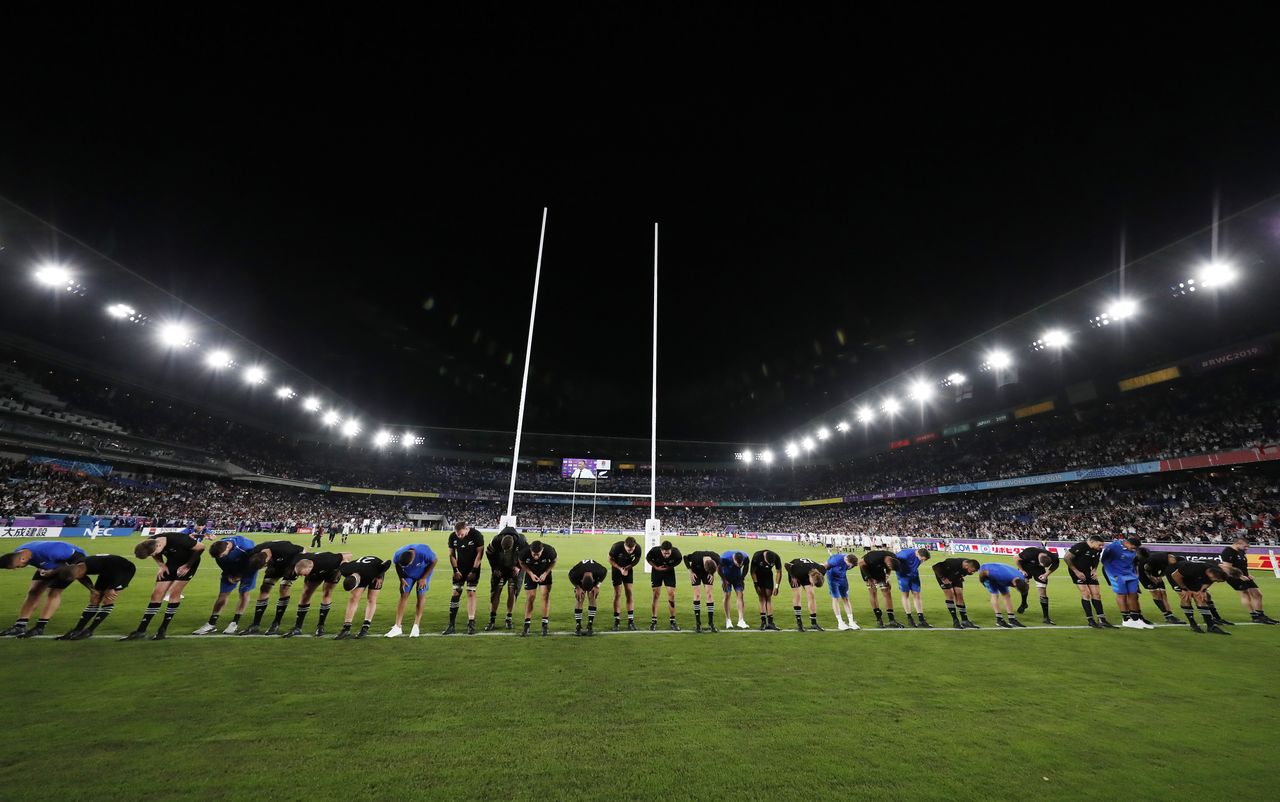
Following the Rugby World Cup semifinal between England and New Zealand on October 26, 2019, both teams line up to bow to fans. (© Reuters)
Meanwhile, the international greeting that is the handshake is still not properly established among Japanese people. Many do not know that it is usual to shake the hand rather than simply hold it, even though its martial roots—with each party showing that they do not have a concealed weapon—is similar to that for bowing in Japan. There are also those who bow while shaking hands, but this gives the impression of wanting to avoid eye contact.
Whether for bowing or shaking hands, knowing the underlying rationale is the path to consideration for others. Anywhere in the world, manners exist to encourage harmonious relationships. The noncontact element of Japanese communication, epitomized by bowing, catches the eye, but at heart this is due to the valuing of a degree of distance. The use of honorific language for psychological distance is another form of respect for others.
Etiquette is a form of sincerity, which always has a meaning behind it. Understanding the cultural background makes it possible to read the consideration for others in manners that may initially seem overly formal, and to put them into practice oneself.
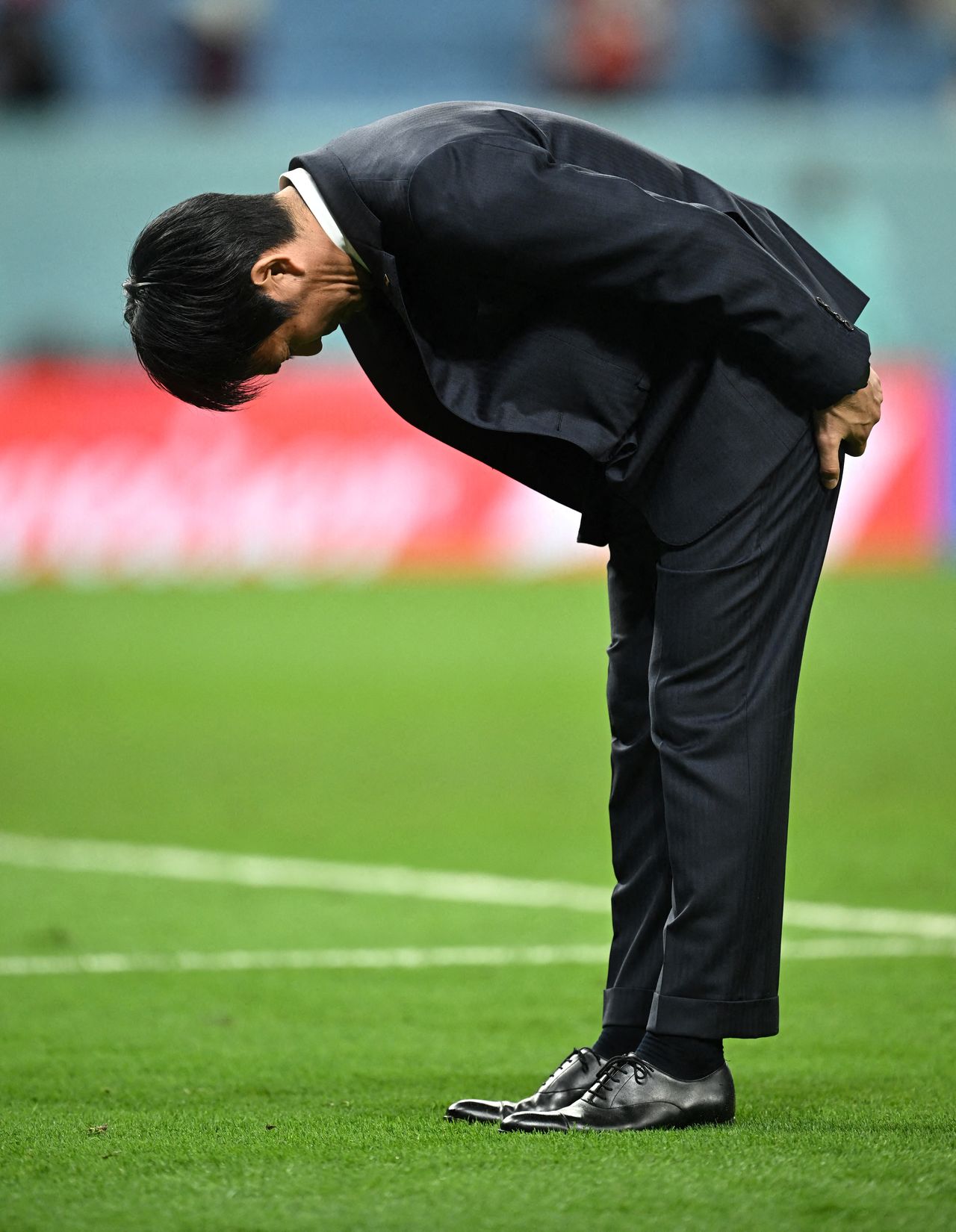
Moriyasu Hajime makes a deep bow to supporters after the exit of Japan’s men’s soccer team from the World Cup in Qatar on December 5, 2022. (© Reuters)
(Originally published in Japanese. Supervised by Shibazaki Naoto, associate professor at Gifu University, who specializes in manners education from a psychological perspective, works to guide etiquette educators, and is an instructor in Ogasawara-ryū etiquette. Illustration by Satō Tadashi. Banner photo: Japan’s rugby players bow to fans after the team is eliminated from the 2023 Rugby World Cup at the pool stage on October 8, 2023. © Reuters.)
